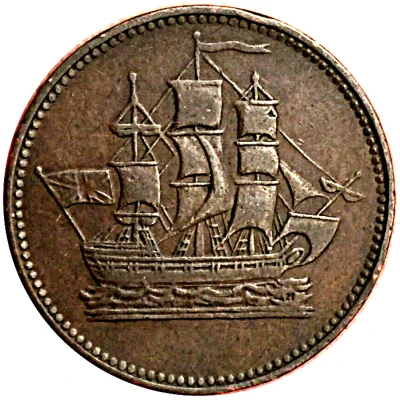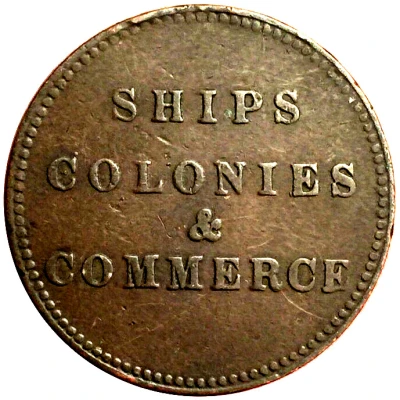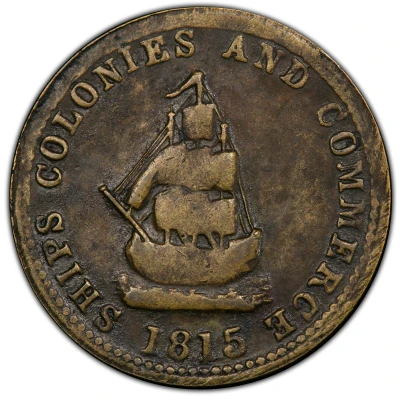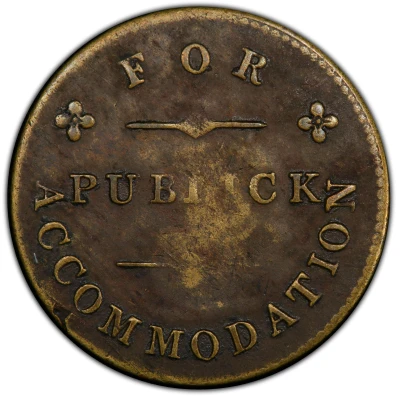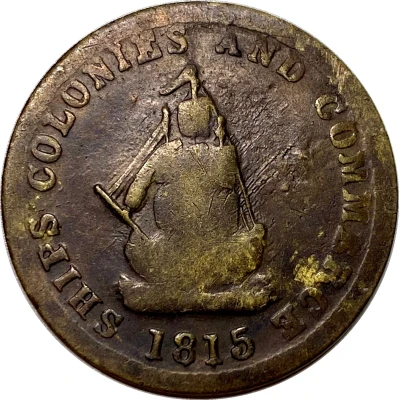
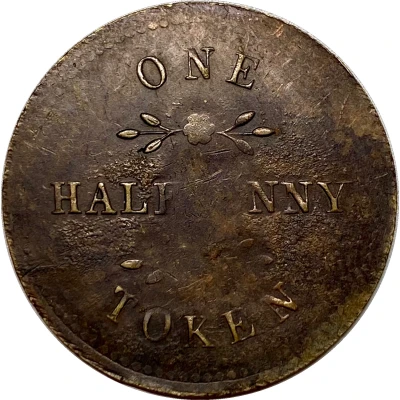

© William Lawrence
½ Penny Ships, Colonies and Commerce
1815 year| Brass | 4.6 g | 28.0 mm |
| Issuer | Prince Edward Island (Canadian provinces) |
|---|---|
| Type | Token |
| Year | 1815 |
| Value | ½ Penny (1⁄480) |
| Currency | Pound (1790-1871) |
| Composition | Brass |
| Weight | 4.6 g |
| Diameter | 28.0 mm |
| Shape | Round |
| Technique | Milled |
| Orientation | Medal alignment ↑↑ |
| Demonetized | Yes |
| Updated | 2024-10-04 |
| Numista | N#82069 |
|---|---|
| Rarity index | 94% |
Reverse
3-lined legend. Two foliated ornaments above and below HALFPENNY.
Script: Latin
Lettering:
ONE
HALFPENNY
TOKEN
Edge
Plain
Comment
Breton 995 and 996 (PE-9A and PE-9B respectively) are halfpennies of crude design that differ considerably from the rest of the Ships Colonies & Commerce series (Breton 997). Similarly, they are attributed to Prince Edward Island where they have been discovered in large hoards (Breton, 1894) and where examples remained in circulation until the end of the 19th century (Trenaman, 1902). The two tokens share an obverse die.From the Charlton Catalogue: "These dies were poorly prepared resulting in lack of detail. Look for surface wear to help in grading."
PE-9A is commonly weakly struck with the PE of HALFPENNY rarely showing even on high-grade examples.
Weight: 4.5 - 4.8g
Diameter: 27.9 - 28.1mm
Its counterpart, PE-9B shares the reverse of a private token issued on the Isle of Man dated 1830. It follows that these tokens were antedated in order to evade Canadian laws regarding the importation/production of tokens.
Interesting fact
One interesting fact about the Token ½ Penny (Ships, Colonies and Commerce) 1815 from Prince Edward Island is that it was used as a form of currency in the Canadian provinces during a time when there was a shortage of official currency. This coin was made of brass and weighed 4.6 grams, and it featured an image of a ship on one side and the value of the coin on the other. Despite its small denomination, this coin played an important role in the economy of Prince Edward Island during the early 19th century.
